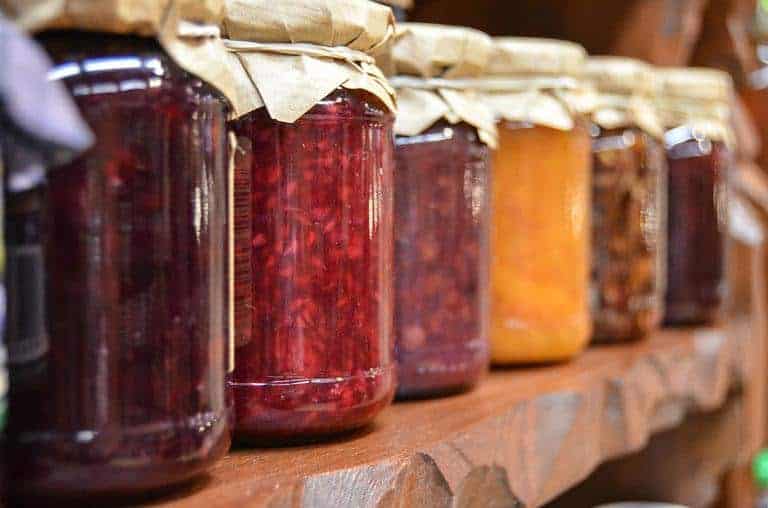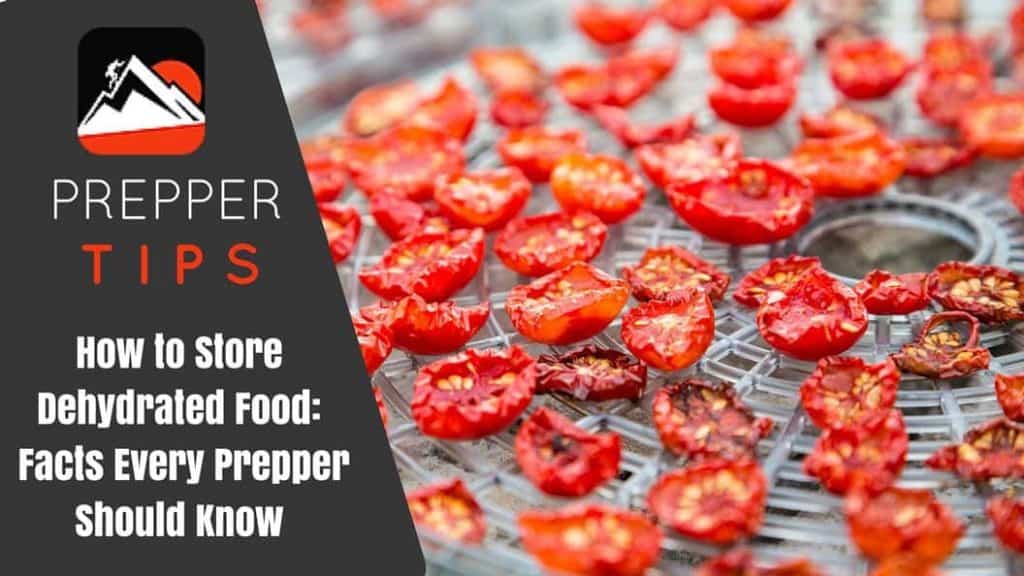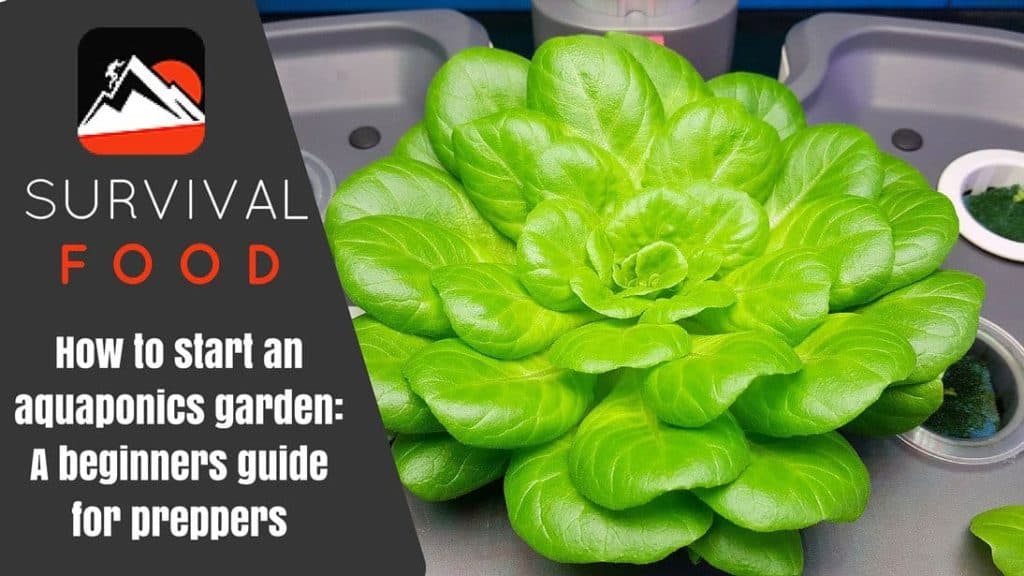Contents
Have you ever spent an entire summer working hard to get a bumper crop garden, and then spent hours on end drying fruits and vegetables? If so, then you may not have been very happy when you found out that all your hard work was ruined in just a few months. As a hobbyist, this might be just an inconvenience, but as a prepper, not knowing how to store dehydrated food properly can spell disaster. This article offers information on storing dehydrated foods in a way that reduces the risk of spoilage.
Four Things That Will Ruin Dehydrated Foods
Storing dehydrated foods is not so different from storing grains because you will still be dealing with the same four culprits:
- moisture
- light
- heat
- oxygen
The presence of moisture, light, warmth, and oxygen encourages the growth of bacteria, molds, fungi, and mildew. These four factors also invite insects to lay eggs in the food or consume it. Once insects attack dehydrated foods, they can also deposit eggs for worms that will hatch in your gut and cause a number of health problems. This includes mental instability, hallucinations, weight gain, and many other problems. Everything that you do during the process of dehydrating and storing away foods will be aimed at making the foods useless to insects and microorganisms.
You might also find interesting our article about how to store flour long-term.
Dehydrating Food Without Electricity
If you do not have a good quality dehydrator, then there is a chance that foods will dry unevenly or retain too much overall moisture. No matter how carefully you pack these foods away, they will spoil faster than expected. Therefore, having a reliable dehydrator is very much part of learning how to store dehydrated foods. But what happens when you don’t have electricity to run a conventional dehydrator? Since people have been dehydrating vegetables, fruits, and meats for thousands of years, there are a number of reliable dehydrators you can build that use the power of the sun for drying. Here are just a few designs that will meet most of your needs:
- Best-Ever Solar Food Dehydrator Plans (From Mother Earth News)
- Solar Food Dehydration (Suitable for Humid Climates)
- Other Designs to Consider (from Build It Solar)
Pros and Cons of the Most Common Containers
There are three basic types of airtight containers that you can use to store dehydrated foods. If you are new to dehydrating foods, you might want to try each one out to see which works best for you.

Mason Jars – even if you aren’t canning foods, you can still create a viable airtight seal that will keep dehydrated foods relatively safe from moisture. Many people do not make extensive use of mason jars because the jars take up a lot of space. If you have to move from your current location, you will find it time-consuming and difficult to take a large amount of food with you. In addition, mason jars cannot prevent light from reaching the food nor will they insulate the food from rising temperatures.
Vacuum Seal Bags – These bags can be used to store dehydrated foods after they have been fully cooled and conditioned. Along with creating an excellent airtight seal, you can pump almost all the air out of the bags to reduce oxygen to the lowest possible levels. If you choose Mylar bags, the food inside will also be shielded from light. Some bags are also insulated and can help shield the food from rising temperatures. Even though vacuum seal bags are lightweight, easy to carry, and easy to stack up, they are not easily replaced using DIY means.
Airtight Plastic Containers – Since these containers come in all shapes, sizes, and colors, it is easy enough to use them to control for moisture and light. On the other hand, plastic will always be susceptible to germs. After a time, you will have to discard these containers or risk the food becoming contaminated.
We also recommend reading our article about how to store rice long-term.
Should You Wear Gloves to Reduce the Risk of Bacterial and Fungal Contamination?
According to a page at Easy Food Dehydrating, wearing latex or vinyl gloves can help reduce the risk of contaminating foods with microorganisms found on your hands. While I am inclined to agree with this notion, my personal experience with good hand hygiene leads me to point out a few additional things.
Quite frankly, simply slipping on a pair of gloves is virtually useless if you don’t take additional precautions. First, you should always thoroughly scrub your hands for at least 5 minutes before handling foods. Use a scrub brush, plenty of soap, and water to get under your nails, between the fingers, and then scrub up to the elbows. I use a spray bottle with rubbing alcohol to spray my hands and arms before putting my gloves on. Finally, under no circumstance do I recommend washing and reusing latex or vinyl gloves. Even if you wear good quality gloves for just a few minutes, sweat will build up inside them and water will begin to leak through them. I have yet to see these gloves dry out completely on all internal and external surfaces let alone be sturdy enough to use again. In fact, when I do wear gloves, I usually wind up changing them every hour or so depending on the nature of the task.
Basic Pointers You Should Always Keep in Mind:
- When dehydrating foods, make sure that you do not overload the dehydrator. You should also make sure that you know how long to dry each food type.
- Make Sure Foods are Completely Cool – this is very important because foods that have not cooled thoroughly will still give off moisture. Depending on the food type, it may take one or two days for the food to be properly conditioned before you can put it into a container.
- Store in Single Serving Packages – Once you open up an airtight container, oxygen will rush in immediately right along with any airborne microorganisms that happen to be around. It is better to store away several smaller packages than one large one. Ideally, you should use the entire contents of a single package within 12 – 24 hours of opening it.
- Always store dehydrated foods in a clean, cool, dark, dry location. Don’t forget to check on your stores every few weeks to make sure that the containers are not leaking and that there is no sign of spoilage. Even though you can store dehydrated foods from 3 – 5 years, the norm is around 6 months to 1 year. Make it a point to consume foods before they go bad and always pay attention to storage dates for each food type.
What About Oxygen Packs?
It is very important to realize that bacteria and other micro-organisms are some of the most adaptive creatures on Earth. As such, you are bound to find at least one type of bacteria that can live in just about any condition. When it comes to dehydrated foods, that means simply limiting oxygen does not guarantee that bacteria won’t grow. There are hundreds to thousands of different bacteria that can grow easily in the absence of oxygen. In this case, the bacteria that cause botulism are some of the most deadly and common when it comes to food preparation. The bottom line is simple. If you have not properly dehydrated the foods, observed strict sanitation measures, and did not condition the foods after cooking, oxygen packs will not guarantee your safety. If anything, these packets may make the situation worse because you will be lulled into a false sense of security.
What to do About Botulism and Other Contaminants

Let’s say you decided to put away several hundred bags of dehydrated foods that have a low acid content and very little salt. No matter how careful you were, you may notice that some foods wound up with mold on them, or did not smell right when you opened the containers. Unfortunately, just because you discarded foods that were obviously contaminated, that does not mean you are safe. Vacuum sealed bags and other airtight containers will not show obvious signs of bloating. As a result, you may not know that the foods are full of botulism and other dangerous bacteria. Even if you think the foods you packed away are perfectly safe to eat, always do the following:
- do not eat foods as soon as you open the container. No matter how tempted you may be, all foods should be thoroughly cooked to kill off susceptible bacteria, or in the case of botulism, to break up the toxin that leads to illness and death.
- Cook with salt, a natural antibiotic that will kill off just about anything. Just make sure that you do not use so much salt that you create other health problems.
- According to Ken Jorgustin, “Consider boiling all home-canned vegetables and meats, without tasting, for 10 minutes. Boil spinach and corn for at least 20 minutes before consuming. Add one minute of boiling time for each 1000 feet above sea level.”
Conclusion
Do you have experience with dehydrating foods? What were your best and worst experiences? I’d love to hear more from readers on this topic so that we can all gain insights into how different food storage systems work. Please feel free to post your notes in the comment section below!
Additional Resources:
- How to Dehydrate Foods for Long Term Storage
- Your Guide to Food Storage for Healthier Eating
- Home Dehydrated Food Shelf Life
- Botulism
- Packaging and Storing Dried Foods




